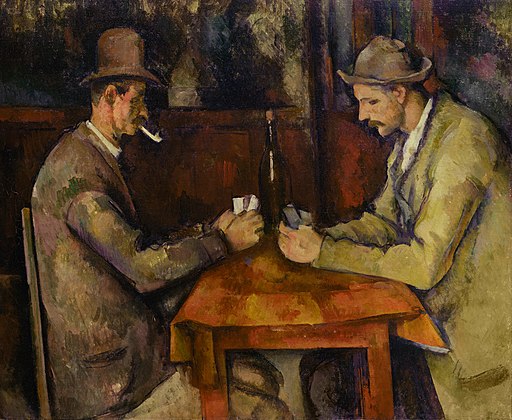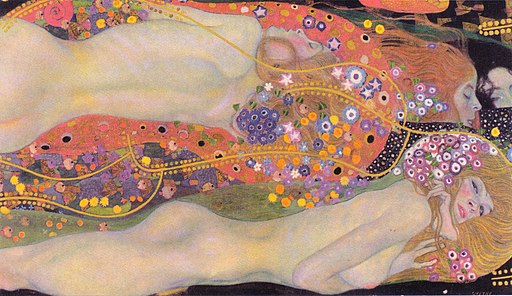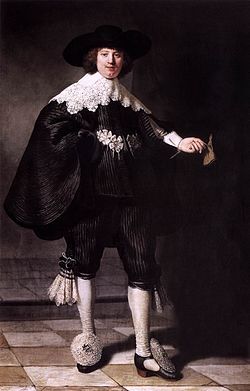TOP 10 Most Expensive Paintings in the World
Prepare to immerse yourself in a realm where artistic mastery meets unparalleled opulence, as we unveil the mesmerizing narratives behind the ten Most Expensive Paintings in the World. Within each stroke of these illustrious canvases lies a tale of artistic brilliance, historical significance, and the relentless pursuit of beauty, beckoning us to explore the extraordinary world of art collecting and cultural legacy.
Here are ten modern paintings that have historically fetched high prices
Behold, a captivating exploration into the realm of the Most Expensive Paintings in the World awaits.
| Rank | Painting Title | Artist | Price (USD) | Year Sold | Source |
| 1 | Salvator Mundi | Leonardo da Vinci | $450.3 million (including commission) | 2017 | |
| 2 | Interchange | Willem de Kooning | $300 million | 2015 (private sale) | |
| 3 | The Card Players (version by Cézanne) | Paul Cézanne | $250 million | 2011 (private sale) | |
| 4 | Nafea Faa Ipoipo (When Will You Marry?) | Paul Gauguin | $300 million | 2015 (private sale) | |
| 5 | Number 17A | Jackson Pollock | $200 million | 2015 (private sale) | |
| 6 | The Standard Bearer | Rembrandt | $328 million | 2016 (private sale) | |
| 7 | Shot Sage Blue Marilyn | Andy Warhol | $195 million | 2022 | |
| 8 | No. 6 (Violet, Green and Red) | Mark Rothko | $186 million | 2014 | |
| 9 | Wasserschlangen II | Gustav Klimt | $183.8 million | 2016 | |
| 10. | Pendant portraits of Maerten Soolmans and Oopjen Coppit | Rembrandt | $180 million | 2015 (private sale) |
Explanations ten modern paintings that have historically fetched high prices
Delve into the captivating narratives behind ten modern paintings that have historically fetched high prices.
1. Salvator Mundi by Leonardo da Vinci (c. 1500)
Leonardo da Vinci’s “Salvator Mundi” stands as a testament to the genius of the Renaissance master. Its mesmerizing depiction of Christ as the “Savior of the World” captivates viewers with its sublime beauty and profound symbolism. This masterpiece’s astronomical price tag reflects its rarity, as one of the few authenticated works by da Vinci in existence. Its acquisition in 2017 shattered auction records, cementing its status as the most expensive painting ever sold.
Its historical significance lies in its attribution to one of the greatest minds of the Renaissance, Leonardo da Vinci, making it a rare and highly sought-after work of art. The relentless pursuit of beauty is evident in da Vinci’s meticulous attention to detail, from the serene expression of Christ to the intricate folds of his robes, beckoning viewers to explore the divine through art.
2. Interchange by Willem de Kooning (1955)
Willem de Kooning’s “Interchange” represents the pinnacle of Abstract Expressionism, a movement characterized by bold brushwork, emotional intensity and the boundaries of painting in the 20th century. This monumental canvas embodies the artist’s revolutionary approach to painting, where gestural abstraction transcends traditional boundaries of representation. Its staggering price reflects its historical significance and the enduring impact of de Kooning’s artistic legacy.
Its historical significance lies in its bold brushwork and gestural abstraction, which challenged traditional notions of representation and paved the way for future generations of artists. The relentless pursuit of beauty is evident in de Kooning’s dynamic composition, which captures the energy and spontaneity of the creative process, inviting viewers to contemplate the transformative power of art.
3. The Card Players (version by Cézanne) by Paul Cézanne (1894-1895)
Paul Cézanne’s “The Card Players” series is hailed as a masterful exploration of form, color, and composition. Each rendition of this iconic subject showcases Cézanne’s meticulous attention to detail and his ability to capture the essence of everyday life with unparalleled precision. The version of “The Card Players” that commands a high price exemplifies Cézanne’s artistic brilliance and his enduring influence on modern art.
Its historical significance lies in its departure from traditional portraiture, as Cézanne sought to capture the essence of everyday life with unparalleled precision. The relentless pursuit of beauty is evident in Cézanne’s meticulous brushwork and subtle use of color, which imbue his subjects with a sense of depth and presence, beckoning viewers to explore the nuances of human expression and interaction.

The Card Players (version by Cézanne) by Paul Cézanne (1894-1895). Medium: Oil on canvas. Dimensions: 47.5 cm × 57 cm (18.7 in × 22 in). Paul Cézanne, Public domain, via Wikimedia Commons
4. Nafea Faa Ipoipo (When Will You Marry?) by Paul Gauguin (1892)
Paul Gauguin’s “Nafea Faa Ipoipo” transports viewers to the exotic landscapes of Tahiti, where the artist sought refuge from Western civilization. This vibrant masterpiece captivates with its lush colors, intricate patterns, and evocative portrayal of indigenous culture. Its status as one of the most expensive paintings in the world reflects Gauguin’s unparalleled ability to capture the essence of paradise and his enduring legacy as a pioneering figure in Post-Impressionism.
Its historical significance lies in its portrayal of indigenous culture and its critique of colonialism, as Gauguin sought to escape the constraints of modern society and reconnect with nature. The relentless pursuit of beauty is evident in Gauguin’s vibrant colors and lush landscapes, which evoke a sense of paradise lost, beckoning viewers to explore the complexities of cultural identity and artistic expression.

Tahitian: Nafea Faa Ipoipo (When Will You Marry?) by Paul Gauguin (1892). Medium: Oil on canvas. Movement: Post Impressionism. Dimensions: 101 by 77 centimetres (40 in × 30 in). Paul Gauguin, Public domain, via Wikimedia Commons
5. Number 17A by Jackson Pollock (1948)
Jackson Pollock’s “Number 17A” is a mesmerizing symphony of color and movement, exemplifying the artist’s revolutionary technique of drip painting. This monumental canvas pulsates with energy as layers of paint intertwine to create a dynamic composition that defies conventional notions of representation. Its exorbitant price tag attests to Pollock’s status as a leading figure in Abstract Expressionism and the enduring fascination with his groundbreaking approach to art-making.
Its historical significance lies in its role in the development of Abstract Expressionism, a movement that sought to express the subconscious mind through spontaneous mark-making. The relentless pursuit of beauty is evident in Pollock’s dynamic composition, which captures the energy and spontaneity of the creative process, inviting viewers to explore the depths of the human psyche through art.

Number 17A by Jackson Pollock (1948). Type: Oil paint on fiberboard. Dimensions: 112 cm × 86.5 cm (44 in × 34.1 in). Location: Private collection of Kenneth C. Griffin. Photo source: Kent Baldner and Wikipedia
6. The Standard Bearer by Rembrandt (1636)
Rembrandt’s “The Standard Bearer” is a captivating portrait that showcases the artist’s unparalleled skill in capturing the human spirit. This timeless masterpiece radiates with an aura of dignity and strength, as the stoic figure of the standard bearer emerges from the darkness with a sense of quiet resolve. Its extraordinary price reflects Rembrandt’s status as one of the greatest painters of the Dutch Golden Age and the enduring allure of his evocative portraiture.
Its historical significance lies in its portrayal of the Dutch Golden Age, a period of economic prosperity and cultural flourishing in the Netherlands. The relentless pursuit of beauty is evident in Rembrandt’s mastery of light and shadow, which imbue his subjects with a sense of depth and presence, beckoning viewers to explore the complexities of human emotion and experience.

The Standard Bearer / De vaandeldrager (Rembrandt, 1636). Medium: Oil on canvas. Dimensions: 118.8 cm × 96.8 cm (46.8 in × 38.1 in). Location: Rijksmuseum, Amsterdam. Rembrandt van Rijn, Public domain, via Wikimedia Commons
7. Shot Sage Blue Marilyn by Andy Warhol (1964)
Andy Warhol’s “Shot Sage Blue Marilyn” is an iconic representation of the legendary Hollywood star Marilyn Monroe, immortalized in Warhol’s signature pop art style. This mesmerizing portrait captures Monroe’s enigmatic allure and enduring legacy, while also reflecting Warhol’s fascination with celebrity culture and mass media. Its astronomical price tag underscores Warhol’s status as a leading figure in the pop art movement and the enduring appeal of his groundbreaking artistic vision.
Its historical significance lies in its critique of celebrity culture and mass media, as Warhol sought to blur the boundaries between high and low art. The relentless pursuit of beauty is evident in Warhol’s vibrant colors and bold compositions, which challenge traditional notions of aesthetics and invite viewers to reconsider the nature of fame and celebrity in contemporary society.
8. No. 6 (Violet, Green and Red) by Mark Rothko (1951)
Mark Rothko’s “No. 6 (Violet, Green and Red)” is a sublime meditation on color, form, and emotion. This monumental canvas envelops viewers in a transcendent experience as luminous fields of color evoke a sense of profound introspection and spiritual contemplation. Its astronomical price reflects Rothko’s status as a master of abstract expressionism and the profound impact of his immersive, transcendent artworks.
Its historical significance lies in its role in the development of Color Field painting, a movement that sought to evoke profound emotional responses through the use of large, abstract expanses of color. The relentless pursuit of beauty is evident in Rothko’s luminous fields of color, which envelop viewers in a transcendent experience, beckoning them to explore the depths of their own consciousness through art.
9. Wasserschlangen II / Water Serpents II by Gustav Klimt (1904-1907)
Gustav Klimt’s “Wasserschlangen II” (Water Serpents II) is a captivating symbolist masterpiece that transports viewers to a world of myth and fantasy. This enchanting canvas brims with sensuality and mystery as sinuous figures intertwine amidst a shimmering sea of gold. Its extraordinary price reflects Klimt’s status as a leading figure in the Viennese Secession movement and the enduring allure of his sumptuous, symbolist artworks.
Its historical significance lies in its exploration of themes of love, desire, and transformation, as Klimt sought to challenge traditional notions of beauty and femininity. The relentless pursuit of beauty is evident in Klimt’s sumptuous use of gold leaf and intricate patterns, which imbue his subjects with a sense of mystery and allure, beckoning viewers to explore the depths of the subconscious mind through art.

Water Serpents II. Medium: Oil on canvas. Dimensions: 80 cm × 145 cm (31 in × 57 in). Location: Private collection, Asia. Gustav Klimt, Public domain, via Wikimedia Commons
10. Pendant portraits of Maerten Soolmans and Oopjen Coppit by Rembrandt (1634)
Rembrandt’s “Pendant portraits of Maerten Soolmans and Oopjen Coppit” are a rare and exquisite example of the artist’s mastery of portraiture. These monumental canvases capture the aristocratic subjects with a sense of grandeur and elegance, showcasing Rembrandt’s unparalleled ability to capture the essence of his sitters. Their astronomical price reflects the rarity of full-length portraits by Rembrandt and the enduring appeal of his timeless masterpieces.
Their historical significance lies in their portrayal of the Dutch elite during the Dutch Golden Age, a period of unprecedented wealth and cultural achievement in the Netherlands. The relentless pursuit of beauty is evident in Rembrandt’s attention to detail and his ability to capture the essence of his sitters, beckoning viewers to contemplate the complexities of power, privilege, and identity in the early modern period.
Portrait of Maerten Soolmans

Portrait of Maerten Soolmans
|
|
| Artist | Rembrandt |
|---|---|
| Year | 1634 |
| Catalogue | Rembrandt Research Project, A Corpus of Rembrandt Paintings VI: #120a |
| Medium | Oil on canvas |
| Dimensions | 209.5 cm × 135.5 cm (82.5 in × 53.3 in) |
| Location | Rijksmuseum and Louvre, Amsterdam and Paris |
Portrait of Oopjen Coppit

Portrait of Oopjen Coppit
|
|
| Artist | Rembrandt |
|---|---|
| Year | 1634 |
| Catalogue | Rembrandt Research Project, A Corpus of Rembrandt Paintings VI: #120b |
| Medium | Oil on canvas |
| Dimensions | 210 cm × 134.5 cm (83 in × 53.0 in) |
| Location | Louvre and Rijksmuseum, Paris and Amsterdam |
Please note that prices and availability may have changed since my last update. It’s advisable to check with reputable auction houses or art market news sources for the most current information.
Sources: PinterPandai, Veranda, LITO
Main photo powered by Midjourney


